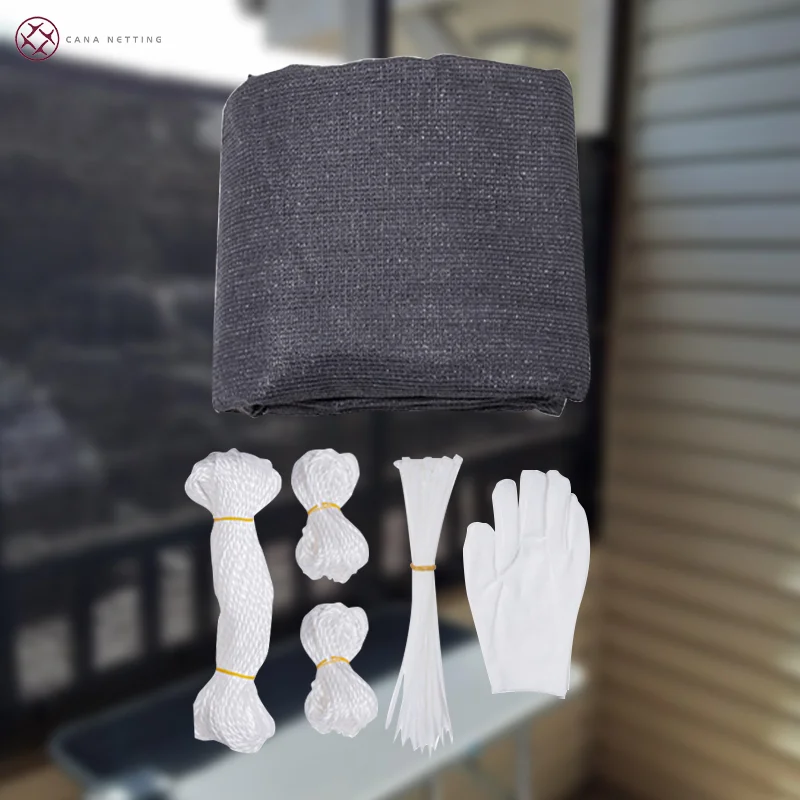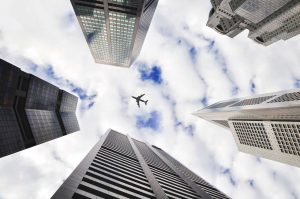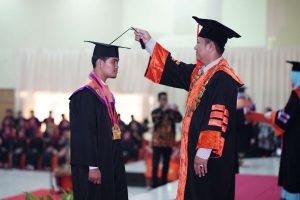- This topic is empty.
-
AuthorPosts
-
09/05/2025 at 16:58 #8478
In the realm of industrial and commercial privacy solutions, the warp knitted privacy divider wind screen has emerged as a standout product due to its unique combination of strength, flexibility, and visual aesthetics. Whether used for construction site barriers, sports field enclosures, residential fencing, or commercial property demarcation, this type of screen offers a multitude of performance-driven benefits. In this blog post, as a high quality balcony net manufacturing factory, CANA will share the features of warp knitted privacy divider wind screen for sale.
1. Warp Knitting Construction
The core distinguishing feature of these wind screens lies in their warp knitted construction. Unlike weft-knitted or woven fabrics, warp knitting uses a longitudinal yarn system where each loop is formed along the length of the fabric. This results in a mesh that:
– Has superior dimensional stability.
– Resists unraveling when cut.
– Maintains its structural integrity under stress.
Warp knitting machines operate by feeding multiple yarns simultaneously, creating interlinked loop structures in a zig-zag pattern. This creates a stable, snag-resistant mesh, ideal for outdoor applications where wear and tear are prevalent.
2. Optimal Wind Permeability and Air Flow Control
One of the critical functional requirements of a wind screen is effective wind diffusion without complete blockage. Total blockage can result in undesirable wind load buildup, which may compromise the structural stability of fencing or temporary installations.
Warp knitted wind screens are typically designed with a porosity level ranging from 70% to 90%, depending on the gauge and knitting density. This allows for:
– Controlled air flow, reducing the risk of tipping or tearing.
– Minimized wind turbulence behind the screen.
– Better microclimate control, especially on sports fields or construction sites.
The openness of the mesh is carefully calibrated to offer a balance between privacy and wind resistance, making it suitable for various environmental conditions.
3. UV Stabilization and Weather Resistance
Since warp knitted privacy screens are predominantly used outdoors, exposure to UV radiation and weather elements is a major concern. High-quality screens incorporate UV inhibitors during yarn extrusion, which significantly enhances their resistance to solar degradation.
Key benefits include:
– Prolonged lifespan (typically 5–10 years, depending on the region and exposure level).
– Color retention, even under intense sun.
– Resistance to cracking, brittleness, and fading.
In addition to UV resistance, these screens are often treated with hydrophobic and anti-fungal coatings, which help them withstand rain, moisture, and mildew formation.
4. Lightweight Yet High Tensile Strength
The structure of warp knitted fabrics enables manufacturers to achieve a low weight-to-strength ratio. Even with relatively light GSM (grams per square meter), these screens offer:
– High tensile and tear strength in both warp and weft directions.
– Resistance to elongation, sagging, and deformation.
– Easy handling and transportation without compromising durability.
This strength-to-weight balance is particularly useful in temporary or mobile applications, such as scaffolding wraps or temporary fencing at events and festivals.

5. Customizable Levels of Privacy
Depending on the intended application, privacy levels can be adjusted during the manufacturing process by altering:
– Stitch density and yarn thickness.
– Knitting pattern (e.g., Raschel vs. Tricot).
– Color opacity and dual-tone layering.
For instance, a 70% shade factor may be ideal for tennis court dividers, whereas a 95% privacy screen might be preferred around construction zones or private properties. The modularity in design allows end-users to choose products tailored to both functional and aesthetic requirements.
6. Flame Retardant Options
In compliance with safety standards, many industrial warp knitted screens are available with flame retardant (FR) treatments. These treatments help meet international flammability standards such as:
– NFPA 701 (U.S.)
– DIN 4102-B1 (Germany)
– BS 5867 (UK)
These properties are particularly crucial in high-risk areas, such as oil and gas facilities, event venues, or construction sites involving welding and hot works.
7. Ease of Installation and Maintenance
The flexibility and softness of warp knitted fabric make it:
– Easy to cut and fit on-site without fraying.
– Compatible with grommets, tie-wraps, Velcro, or hook systems for rapid deployment.
– Foldable and storable without permanent creases or distortion.
Maintenance is minimal—most fabrics can be cleaned with mild soap and water, and they do not attract dust or grime as heavily as other materials. For high-traffic or sensitive areas, antimicrobial coatings can be applied to inhibit bacterial growth.
8. Aesthetic and Branding Potential
Besides functionality, warp knitted privacy screens offer a canvas for visual enhancement. The fabric accepts various printing techniques, including:
– UV-resistant screen printing.
– Digital dye sublimation.
– Heat transfer vinyl (HTV).
This opens up opportunities for branding, advertisements, safety warnings, or artistic designs. Custom logo printing on construction site screens, for example, not only enhances the company’s visibility but also contributes to site beautification.
9. Sustainable and Recyclable Materials
Many modern warp knitted screens are manufactured from polyethylene (HDPE) or polypropylene (PP), which are recyclable and often sourced from post-consumer or industrial waste. With increasing environmental awareness, some manufacturers now offer:
– PVC-free options.
– Biodegradable or compostable alternatives.
– Take-back programs for end-of-life products.
This sustainability aspect is becoming a key purchasing criterion for eco-conscious businesses and municipalities.
10. Versatility Across Applications
The adaptability of warp knitted screens extends across several industries, including:
– Construction and infrastructure – for dust control, debris containment, and visual privacy.
– Sports and recreation – for wind reduction and perimeter fencing on courts and fields.
– Agriculture – as shade cloths or windbreaks for crops.
– Events and entertainment – for crowd control and site boundary marking.
– Residential and commercial fencing – offering both privacy and wind protection.
Manufacturers often provide screens in standard rolls or custom sizes, ensuring compatibility with different installation setups.
Conclusion
The warp knitted privacy divider wind screen is a technological evolution in privacy fencing solutions, engineered for performance, durability, and visual appeal. Its unique properties—rooted in the warp knitting process—make it exceptionally suited to demanding outdoor environments. With advanced features such as UV stabilization, flame resistance, and customizability, it presents a compelling case over traditional woven or non-woven fabrics. As industries increasingly seek versatile, sustainable, and high-performance screening options, warp knitted screens stand out as a future-ready solution that meets both functional and aesthetic demands.
-
AuthorPosts
- You must be logged in to reply to this topic.



